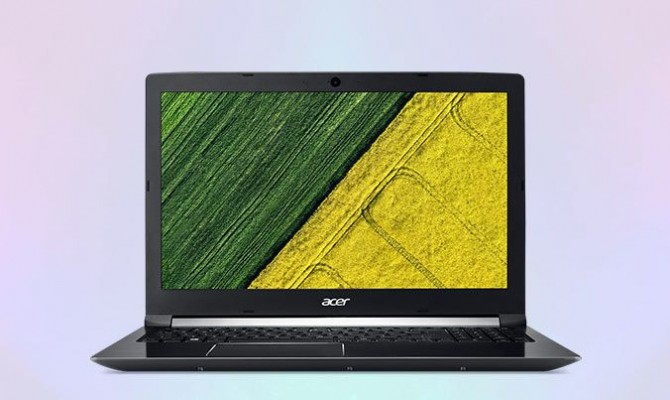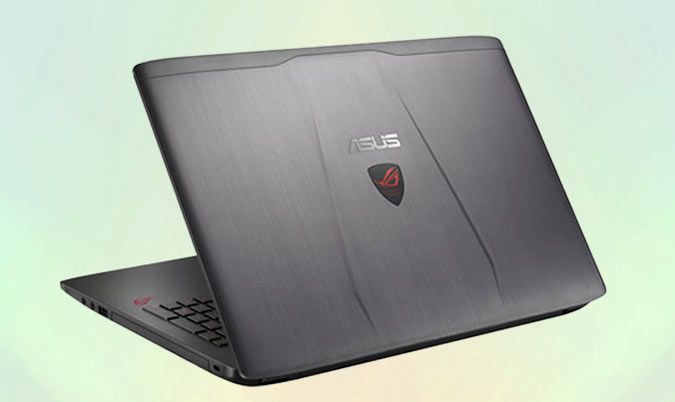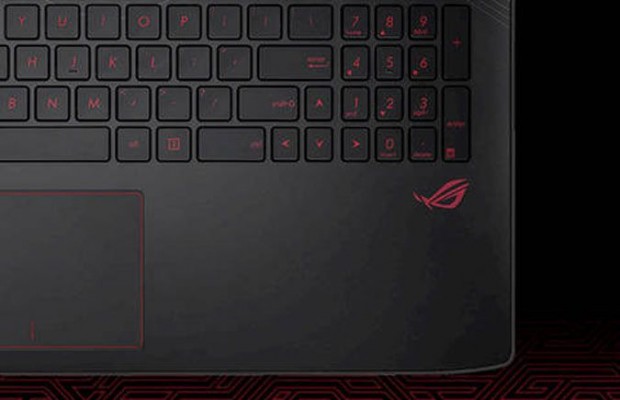Help Me, Laptop: Acer Aspire 7 vs. Asus ROG Strix GL553VD
If you're a PC gamer like I am, the thought of an affordable, portable gaming laptop gets you excited. However, finding that magic combination of price, size and power can be a bit of a headache, which is why tjen.coleman turned to the forums on our sister site Tom's Guide for help in choosing a portable laptop that would be used for both gaming and editing.

Coleman's budget is between $1,200 and $1,400 for a system that's no more than 15 inches. The machine needs to have a backlit keyboard and both a solid-state drive and a hard drive. It also has to have enough power to play games on good to high-quality settings. Oh, and one more thing: Coleman isn't really a fan of the "gamer" aesthetic that most systems sport but is willing to compromise.
Price and Value
Coleman has narrowed down the options to the $1,398 Acer Aspire 7 A715-71G and the $979 Asus ROG Strix GL552VW-DH71. The Aspire 7 comes packed with a 2.5-GHz Intel Core i5-7300HQ processor with 8GB of RAM; a 1TB hard drive; an Nvidia GeForce GTX 1050 GPU with 2GB of VRAM; and a 15.6-inch, 1920 x 1080 display. The Strix GL552VW is an older model of the current line and features a last-gen 2.6-GHz Intel Core i7-6700HQ CPU, 16GB of RAM, a 1TB hard drive, an Nvidia GeForce GTX 960M and a 1080p display.
However, because Coleman will be using the new laptop for gaming and editing, I'm going to suggest the newer version of the Strix (the GL553VD), which bumps up the system to a 7th-gen Core i7-7700HQ CPU with an Nvidia GTX 1050 GPU with 4GB of RAM. At $1,038, it's only $59 more than the older version.
MORE: The Best Gaming Laptops
If Coleman really wants a Core i7 CPU on the Aspire 7, they'll have to be willing to fork over $1,898, which is over budget. However, the extra money also nets Coleman a 256GB SSD and an Nvidia GeForce GTX 1050 Ti GPU with 4GB of RAM.
Based on price alone, I have to recommend the Strix, which is $360 less than the Aspire 7. And yes, I know that the bright-orange logo can be a bit much, but with the money you're saving, you can buy quite a few games or some editing software. But money isn't everything, so let's dig a bit deeper.
Stay in the know with Laptop Mag
Get our in-depth reviews, helpful tips, great deals, and the biggest news stories delivered to your inbox.
Design
In addition to having a more refined design, the Aspire 7 is also fairly light, at 5.2 pounds; that's a little lighter than the Strix's 5.6-pound frame. At 15 x 10.3 x 0.94 inches, the Aspire 7 is also slimmer than the Strix (15.1 x 10 x 1.2 pounds).

However, the Strix's slightly thicker dimensions allow it to house a tray-loading DVD drive in addition to its two USB 3.0 ports, USB 2.0 port, USB Type-C port, HDMI port, Gigabit Ethernet, headphone jack and Kensington lock slot. The Aspire 7's ports include one USB 3.0 port, a USB Type-C port, a pair of USB 2.0 slots, an SD card reader, HDMI, Gigabit Ethernet and a headset jack.

Display
Unfortunately, we haven't reviewed the Aspire 7 yet, so other than telling you that it has an 15.6-inch 1080p IPS panel, I don't have much more information. However, we found that the Strix's 15.6-inch 1080p display is both sharp and colorful, and it can reproduce an excellent 122 percent of the sRGB color gamut with a 1.6 accuracy on the Delta-E test (the closer to 0, the better) and an above-average brightness of 269 nits.
Keyboard
Rocking four customizable zones, the Strix is definitely a gamer's laptop, allowing you to trick out the keyboard in myriad colors. The Aspire 7, by contrast, has white backlighting, which is more subtle in a classroom setting.

However, we are really fond of the Strix's keyboard, as it offers a deep 2 millimeters of key travel and requires 62 grams of actuation force, both of which make for a comfortable typing experience.
Specs
Specs-wise, the Strix is the clear winner. For the price, you get a 7th-gen Core i7 processor with 16GB of RAM. That's double the memory of the Aspire, which has a less-powerful CPU. Although both systems have the same Nvidia GTX 1050 GPU, the Strix has 4GB of VRAM, compared to with Aspire, which has only 2GB. Although it might seem inconsequential, those specs can greatly affect your multitasking capabilities. And because Coleman is planning to game and video edit, those extra 2GB of VRAM will come in handy whether they're setting up for a kill shot or cutting together a few scenes.
Battery Life
Acer claims that the Aspire 7 will get up to 7 hours on a charge. It's a claim I'm looking forward to putting to the test sooner rather than later. However, most laptops with a discrete graphics card often fall short of that claim.
MORE: Laptops with the Longest Battery Life
The Strix lasted only 3 hours and 41 minutes on the Laptop Mag battery test, which consist of continuous web surfing over Wi-Fi.
Bottom Line
Ultimately, I'm recommending that Coleman go for the Asus ROG Strix. Despite its gamer looks, it offers better specs, a comfortable keyboard and a lovely display for significantly less money than the Aspire 7. If Coleman wants a slimmer, low-key design, then they should consider the Acer Aspire 7, but the Strix is definitely the better deal.
Illustration: Laptop Mag

Sherri L. Smith has been cranking out product reviews for Laptopmag.com since 2011. In that time, she's reviewed more than her share of laptops, tablets, smartphones and everything in between. The resident gamer and audio junkie, Sherri was previously a managing editor for Black Web 2.0 and contributed to BET.Com and Popgadget.
